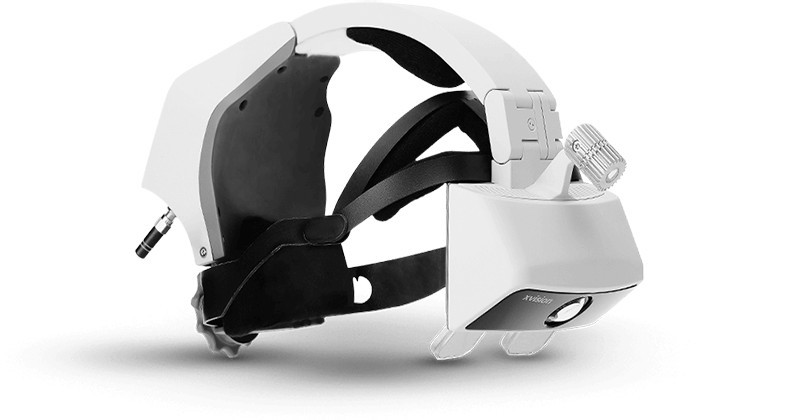
What kid didn’t grow up wanting x-ray vision as their superpower? Science and science fiction often overlap as advancing technology brings to life seemingly impossible scenarios, including such magic as self-driving cars, space travel and of course, augmented reality (AR). AR itself isn’t new — it’s been used in military applications for more than two decades — but it is certainly gaining attention in orthopedics as innovative use cases are becoming more prevalent.
“AR navigation technology is an incredible new platform,” said Sébastien Henry, Founder and CEO of France-based Pixee Medical. “You can look at this technology as a connected Swiss Army knife that can assist you for navigated surgery, technical support, data management and many other things.”
Pixee Medical has been at the forefront of AR tools for surgical planning and navigation. In May 2020, the company received CE Mark approval for Knee+, the first orthopedic navigation system using AR for total knee replacement (TKR). Just a month later, the world’s first TKR surgery using Pixee’s Knee+ technology and Vuzix M400 Smart Glasses was performed. Most recently, the company announced FDA 510(k) clearance for the system.
“We are living in a world where innovation can no longer be separated from the healthcare system’s financial limits,” Henry said. “Thus, we thought that by reducing the number of instruments, avoiding disposable, and using off-the-shelf AR glasses, we would be able to create an affordable but cutting-edge solution.”
The Technology
Pixee’s navigation software combines proprietary computer vision and deep learning algorithms, and can be used with any AR glasses to track instruments and implants during a procedure.
“Our solution is an Augmented Reality navigation system for arthroplasty,” Henry said. “It is a combination of Smart Glasses, 3D visualization features, and a proprietary tracking solution. I would say that it is the smallest navigation tool ever created because the computer, the screen, the camera and the battery are embedded in the glasses without the need for cable, external computer or external tracking system.”
QR code type markers are positioned on surgical instruments so the smart glasses can film them and analyze each image to recognize and calculate their precise 3D positioning. Pixee’s first product, Knee+, assists orthopedic surgeons during total knee arthroplasties for the main bone cuts without the need for disposables or preoperative images.
“The surgeon places a bone reference within the incision and in two easy steps, he can navigate the cutting planes,” Henry said. “We are already working on the integration of new features including sizing and soft tissue balancing.”
 Filling a Need
Filling a Need
AR technology offers a great opportunity to propose a reliable surgical navigation tool at an affordable cost. Navigation technology, in general, has been proven to improve clinical outcome in orthopedic surgeries, but AR users can be disappointed in the amount of effort needed in order to get results, so the benefit/effort or benefit/cost leaves room for improvement. In the end, most surgeons give up using AR.
And as a general rule, the more immersive AR experience you need, the bigger the hardware. But Pixee’s approach focuses on the user experience.
Pixee started with off-the-shelf, light glasses that surgeons wouldn’t notice during the surgery. This reduces the risk of being disturbed by semi-transparent lenses, the weight of heavy devices, and the need for specific corrective lenses. Surgeons are able to keep their own glasses and the Pixee solution is compatible for use under surgical helmets.
“Augmented Reality navigation is not just about displaying virtual information during the surgery,” Henry said. “It’s also about navigating instruments in a challenging 3D environment. We have an extraordinarily strong engineering team with experts in computer vision and deep learning. We started by accurately tracking QR code type markers but in the near future we’ll directly track instruments, patients’ anatomy and O.R. space by using our proprietary medical-grade and qualified algorithms.”
The technology can be used on a variety of devices and include any number of accessories. Robotic arms, reamers or any other navigated or regular instruments can be added. Data can be recorded or exchanged instantaneously by using external servers as most of the forthcoming smart glasses are expected to integrate 5G chips.
“Most of the orthopedic companies are switching from a unique implant business model to a service one. Our connected technology and multifunctional platform can be a cornerstone for this strategy,” Henry said. “We can open the OR to global connectivity for many purposes. I don’t think that surgeons will be replaced by those tools, but they could be enhanced. We are talking about Augmented Surgeons.”
Using the Pixee solution for gathering O.R. data can also contribute to a progressive learning environment, where the data collected for predictive analysis can help to better plan other navigated surgeries with the same tools.
Eying the Future
Pixee started with TKR, as knee replacement represented most of the navigated surgeries. Partial knee, hip and shoulder are the next steps for the company. For hip, they are focusing first on a product for offset, leg length measurement and easy cup orientation. For shoulder, they are working on an image-based mixed-reality product that will offer “see through the skin” features.
The Knee+ is already commercialized in Europe and Australia, with the first European units sold in 4Q20 and full launch made in January 2021. As noted earlier, FDA clearance has been granted and the first surgery in the U.S. is expected to be performed before the end of summer 2021.
“We are using implant manufacturers as our distributors,” Henry said. “We now have more than 15 distributors signed for Europe and Australia and are still in progress to integrate new ones. We are now looking forward to developing our business in Asia and the U.S. before exploring new opportunities.”
Henry anticipates that as the technology is close to being mature for a wide adoption, the industry will begin to see AR solutions in every O.R.
“We created a unique business model with a very affordable hardware and no disposables,” he said. “I would estimate the ratio of the cost of acquisition of our hardware to be 1/100 compare to announced robotic hardware prices. After the acquisition of the full product, users just have to pay per use thanks to our virtual token system.”
HT
Heather Tunstall is a BONEZONE Contributor.




